City Of Ephesus And Celsus Library With More Than 12,000 Scrolls
A. Sutherland - AncientPages.com - This library - built in 117 AD - is one of the most beautiful structures in Ephesus.
It was a monumental tomb for Gaius Julius Celsus Polemaeanus - the governor of the province of Asia and a great lover of books.
The construction of the building began in 110 AD. The library was donated by his son - Julius Aquila Polemaeanus, who spent 25 000 denars for this purpose. The construction was latere finished by his descendants in 135 AD.
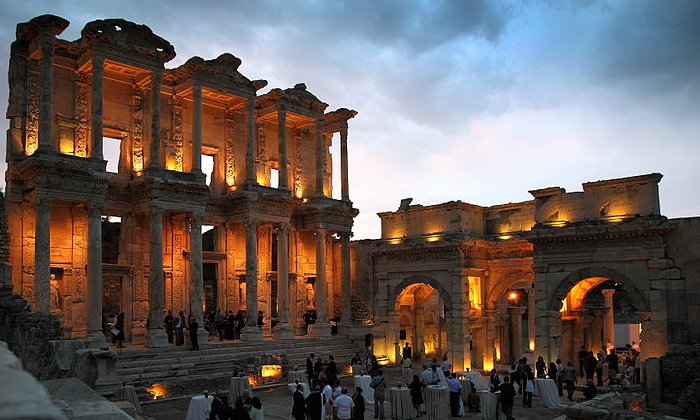 Image credit: Austrian Archaeological Institute - CC BY-SA 3.0
Image credit: Austrian Archaeological Institute - CC BY-SA 3.0
Resting on a nine-stepped podium 21m in length, the impressive surviving facade is richly decorated with relief carvings and has two stories - each with three pairs of columns capped with Corinthian capitals.
Celsus himself was entombed beneath the ground floor of the library in a lead coffin encased in a decorated marble sarcophagus. Across the entrance, there was a statue of Athena, the goddess of wisdom. The library stored more than 12,000 scrolls and it was the third richest library in ancient times after the Alexandra and Pergamum.
The library was a fascinating place with countless valuable literary works, and so was Ephesus, which is dated back to 2000 years BC. The city's long history includes the capture of Ephesus by the Kimmers (Cimmerians) in the 7th century BC, by the Lydians in 560, and later in 546 BC by the Persians, and their domination until Alexander the Great defeated the Persians in 334 BC.
The ruins of Ephesus, located near Selçuk town at 70 kilometers (44 miles) south of Izmir, is now an archaeological site with many ancient ruins including the Temple of Isis is situated at the center of the city's Agora, the fountain of Sextilius Pollio built in the year 93 AD, the Temple of Domitian (81-93 AD), the Gate of Heracles (Hercules), the fountain of Trajan built in the years 102-114, and the Temple of Hadrian appears dated to 117-138 AD,
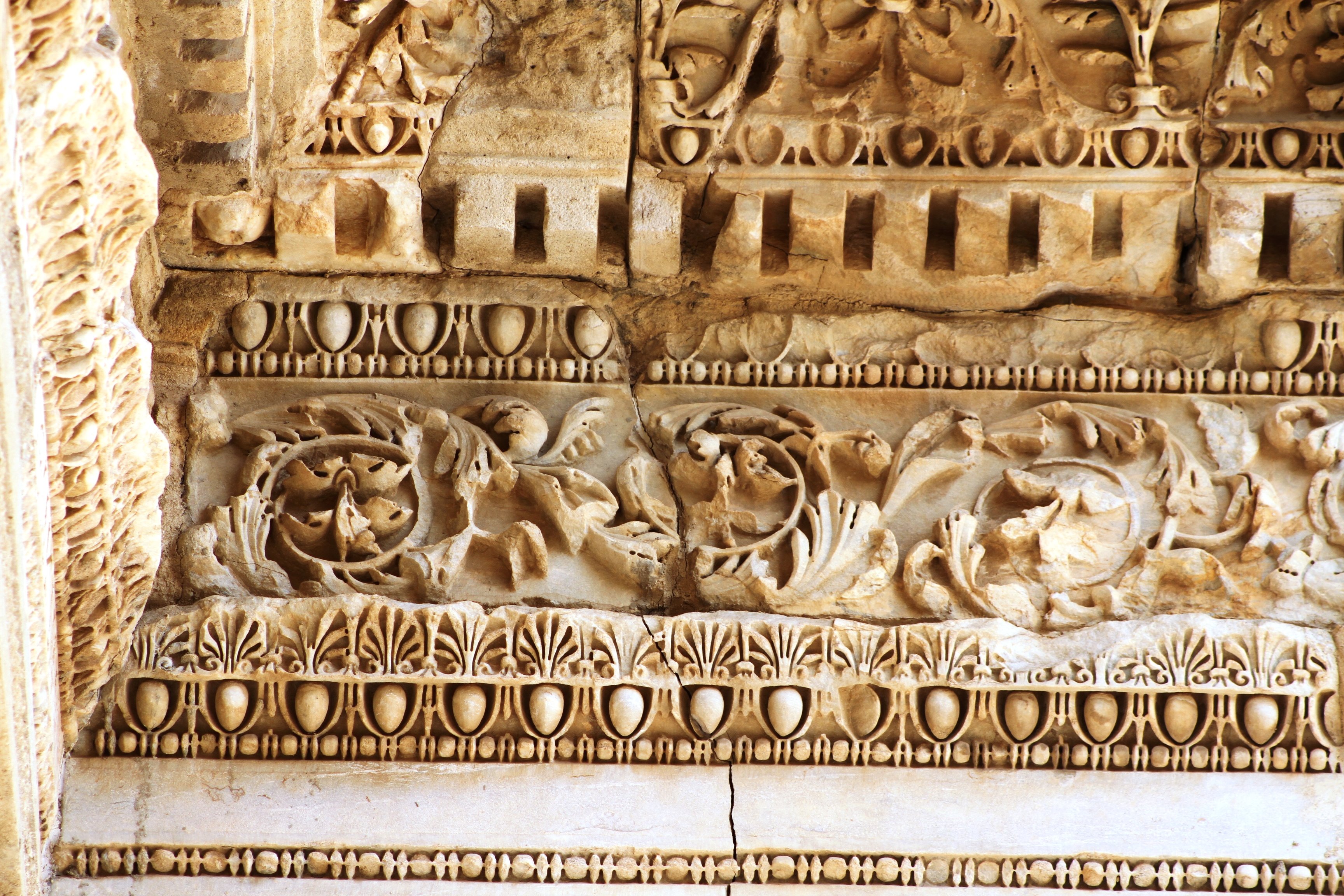 Celsus Library in Ephesus. Photo credits: Jose Luiz/Wikimedia
Celsus Library in Ephesus. Photo credits: Jose Luiz/Wikimedia
In the Celsus Library, the scrolls of the manuscripts were kept in cupboards in niches on the walls. There were double walls behind the bookcases to prevent them from the extremes of temperature and humidity.
The facade of the library has two stories, with Corinthian-style columns on the ground floor and three entrances to the building, flanked by four statues set back in niches.
The builders used an optical trick in that the columns at the sides of the facade are shorter than those at the center, giving the illusion of the building being greater in size.
Today the statues in the niches of the columns are copies of the originals. The interior of the library and all its books were destroyed by fire in the devastating earthquake that struck the city in 262. Only the facade survived. About 400 AD, the library was used for other purposes. The facade was completely destroyed by a later earthquake, probably in the late Byzantine period.
The statues symbolize wisdom (Sophia), knowledge (Episteme), intelligence (Ennoia), and valor (Arete) - the virtues of Celsus. The library was restored with the aid of the Austrian Archaeological Institute and the originals of the statues were taken to Ephesus Museum in Vienna in 1910.
Written by – A. Sutherland - AncientPages.com Senior Staff Writer
Copyright © AncientPages.com All rights reserved. This material may not be published, broadcast, rewritten or redistributed in whole or part without the express written permission of AncientPages.com
More From Ancient Pages
-
 Neanderthals: How A Carnivore Diet May Have Led To Their Demise
Featured Stories | Nov 7, 2022
Neanderthals: How A Carnivore Diet May Have Led To Their Demise
Featured Stories | Nov 7, 2022 -
 Unique Finds Discovered In Oman – Rub’al-Chali Desert Reveals Its Secrets
Archaeology | Apr 20, 2023
Unique Finds Discovered In Oman – Rub’al-Chali Desert Reveals Its Secrets
Archaeology | Apr 20, 2023 -
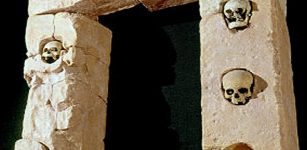 Ancient Cult Of Human Skulls And Communication With The Other World
Ancient Traditions And Customs | Mar 21, 2019
Ancient Cult Of Human Skulls And Communication With The Other World
Ancient Traditions And Customs | Mar 21, 2019 -
 Sacred Artifact With Mystical Powers – The Legend – Part 1
Ancient Mysteries | Apr 24, 2019
Sacred Artifact With Mystical Powers – The Legend – Part 1
Ancient Mysteries | Apr 24, 2019 -
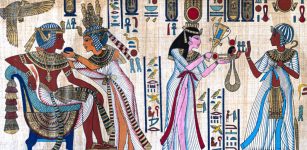 Letters Reveal How Ancient Egyptians Argued With Friends And What Angered Them
Civilizations | Oct 18, 2020
Letters Reveal How Ancient Egyptians Argued With Friends And What Angered Them
Civilizations | Oct 18, 2020 -
 Danger Lurking In The Woods – Mysterious Vanishings, Deaths And Unusual Behavior – Part 3
Featured Stories | Jul 9, 2018
Danger Lurking In The Woods – Mysterious Vanishings, Deaths And Unusual Behavior – Part 3
Featured Stories | Jul 9, 2018 -
 Norse Kingdom Of Dublin Was Founded By The Vikings In 839 A.D.
Ancient History Facts | Mar 15, 2016
Norse Kingdom Of Dublin Was Founded By The Vikings In 839 A.D.
Ancient History Facts | Mar 15, 2016 -
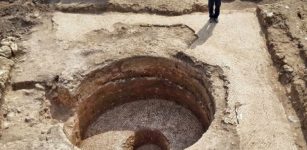 Large 1,500-Year-Old Winepress Unearthed In Area Once Known For Wine production.
Archaeology | Oct 29, 2015
Large 1,500-Year-Old Winepress Unearthed In Area Once Known For Wine production.
Archaeology | Oct 29, 2015 -
 Early Humans In Europe Were Making Fires At Least 250,000 Years Ago – New Study
Archaeology | May 18, 2023
Early Humans In Europe Were Making Fires At Least 250,000 Years Ago – New Study
Archaeology | May 18, 2023 -
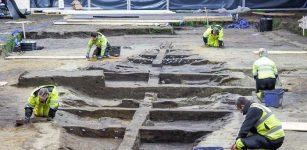 Reconstrucion Of The 19-Meter-Long Gjellestad Viking Ship In Progress
News | Oct 9, 2023
Reconstrucion Of The 19-Meter-Long Gjellestad Viking Ship In Progress
News | Oct 9, 2023 -
 A 900-Year-Old Crusader Sword Discovered Off The HaCarmel Coast, Israel
Archaeology | Oct 20, 2021
A 900-Year-Old Crusader Sword Discovered Off The HaCarmel Coast, Israel
Archaeology | Oct 20, 2021 -
 Mystery Of Ancient Beehive Tombs Around The World
Featured Stories | Feb 28, 2016
Mystery Of Ancient Beehive Tombs Around The World
Featured Stories | Feb 28, 2016 -
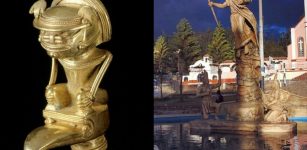 Legend Of Bochica And Mysterious Ancient Stone Structures In Colombia
Featured Stories | Jun 5, 2016
Legend Of Bochica And Mysterious Ancient Stone Structures In Colombia
Featured Stories | Jun 5, 2016 -
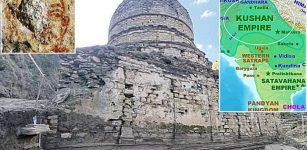 2,000-Year-Old Buddhist Complex Unearthed In Northern Swat, Pakistan
Archaeology | Feb 20, 2021
2,000-Year-Old Buddhist Complex Unearthed In Northern Swat, Pakistan
Archaeology | Feb 20, 2021 -
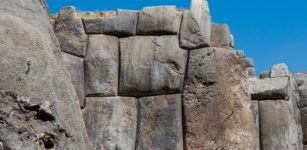 Mysterious Killke Culture Of Peru: Did They Construct Sacsayhuaman?
Civilizations | Mar 14, 2019
Mysterious Killke Culture Of Peru: Did They Construct Sacsayhuaman?
Civilizations | Mar 14, 2019 -
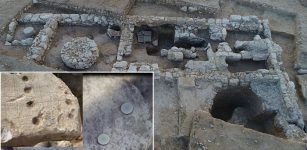 1,200-Year-Old Soap ‘Factory’ Unearthed In Beduin City Of Rahat In Israel
Archaeology | Aug 18, 2020
1,200-Year-Old Soap ‘Factory’ Unearthed In Beduin City Of Rahat In Israel
Archaeology | Aug 18, 2020 -
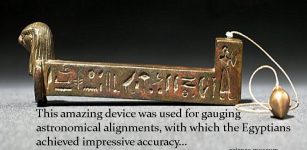 Merkhet – An Ancient Egyptian Timekeeping Instrument
Ancient History Facts | Jul 3, 2018
Merkhet – An Ancient Egyptian Timekeeping Instrument
Ancient History Facts | Jul 3, 2018 -
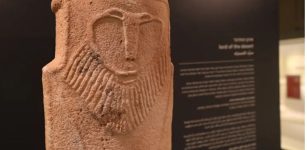 Never-Before-Seen Ancient Statue Of The ‘Lord Of The Desert’ Revealed To The Public – But Who Was He?
Artifacts | Mar 19, 2022
Never-Before-Seen Ancient Statue Of The ‘Lord Of The Desert’ Revealed To The Public – But Who Was He?
Artifacts | Mar 19, 2022 -
 On This Day In History: SS City of Glasgow Leaves Liverpool And Is Never Seen Again – On March 1, 1854
News | Mar 1, 2017
On This Day In History: SS City of Glasgow Leaves Liverpool And Is Never Seen Again – On March 1, 1854
News | Mar 1, 2017 -
 Mysterious Runes Deciphered By School Children In Sweden Shed New Light On The Kensington Stone
Artifacts | Oct 4, 2019
Mysterious Runes Deciphered By School Children In Sweden Shed New Light On The Kensington Stone
Artifacts | Oct 4, 2019
